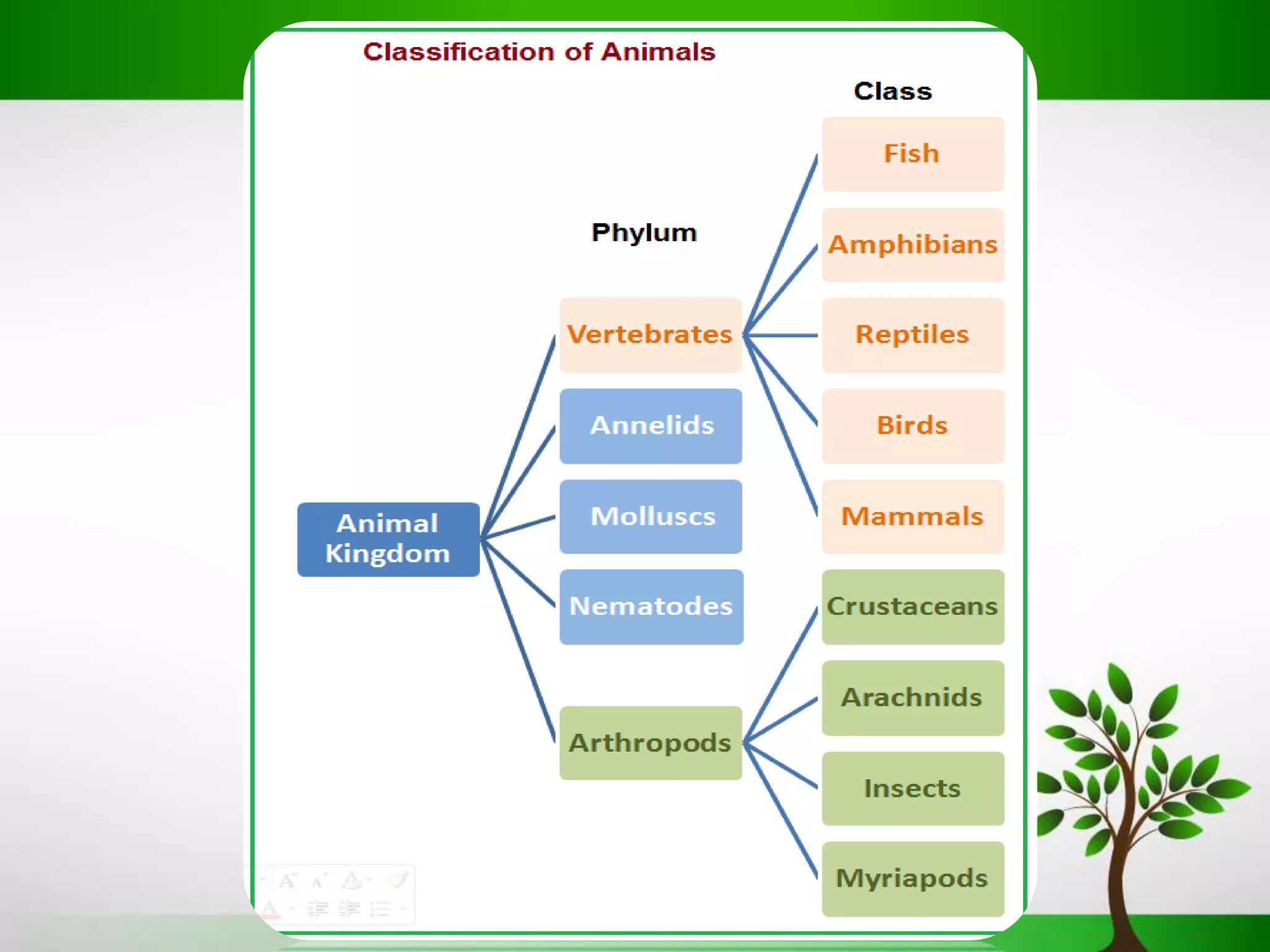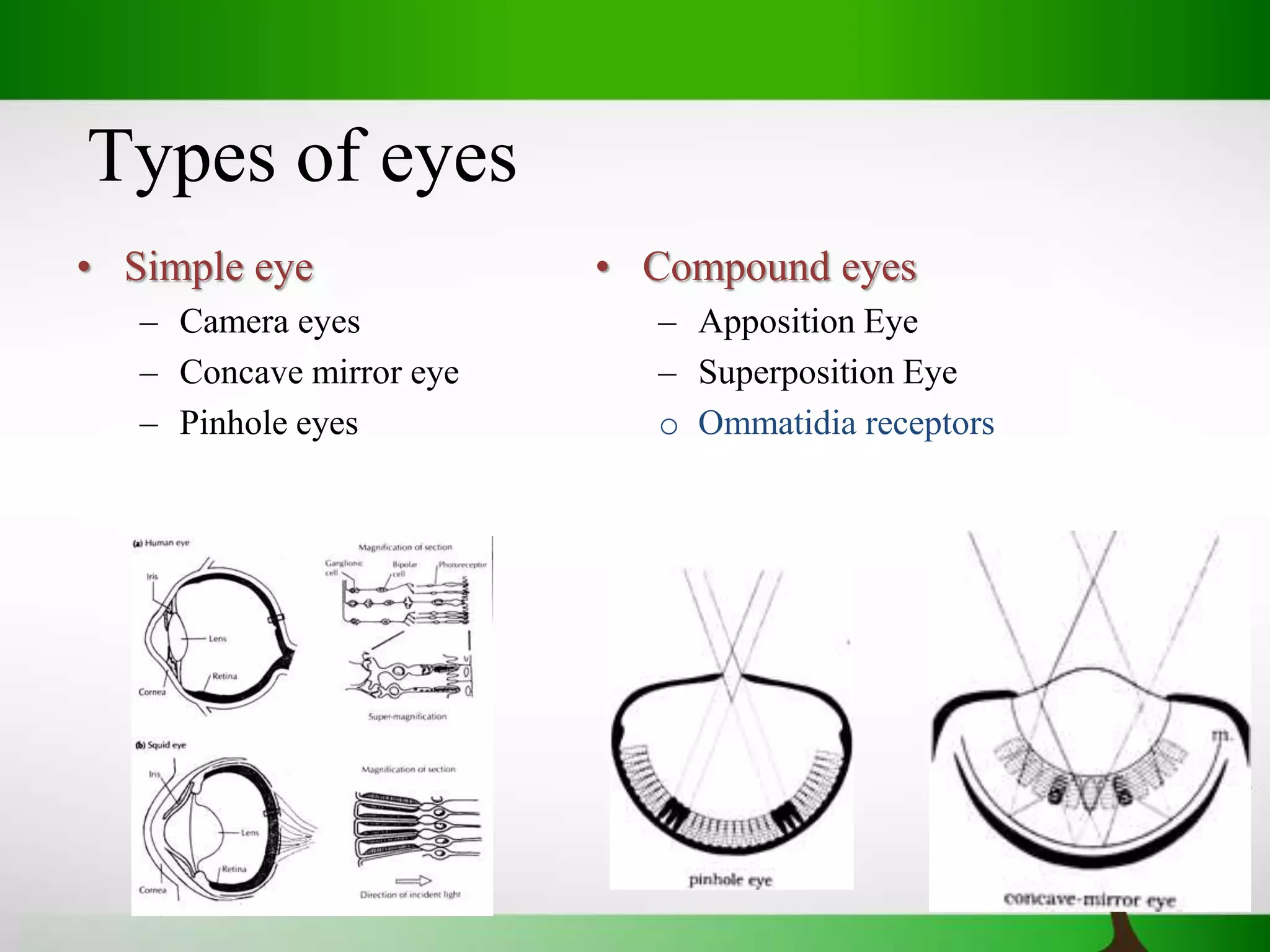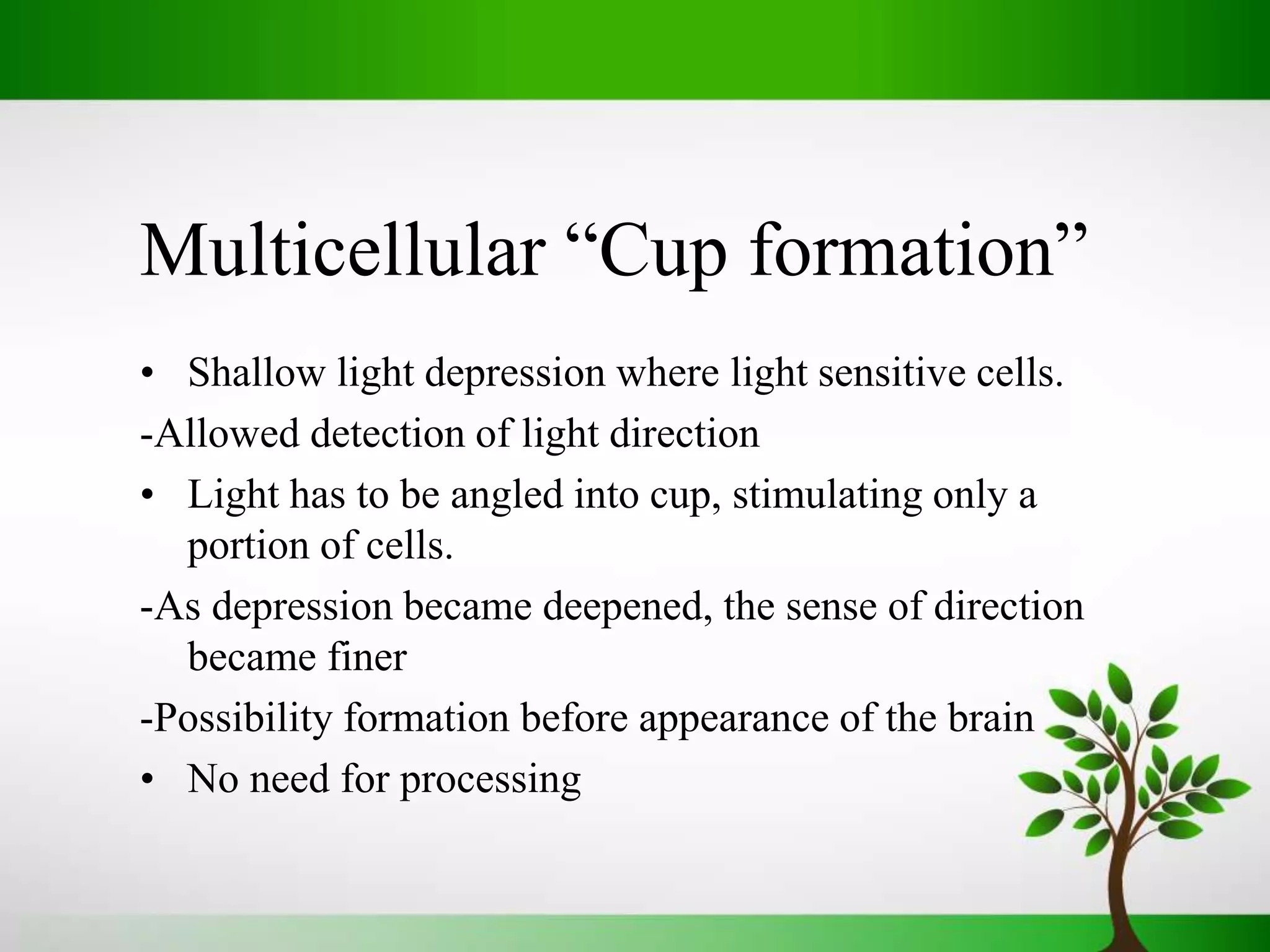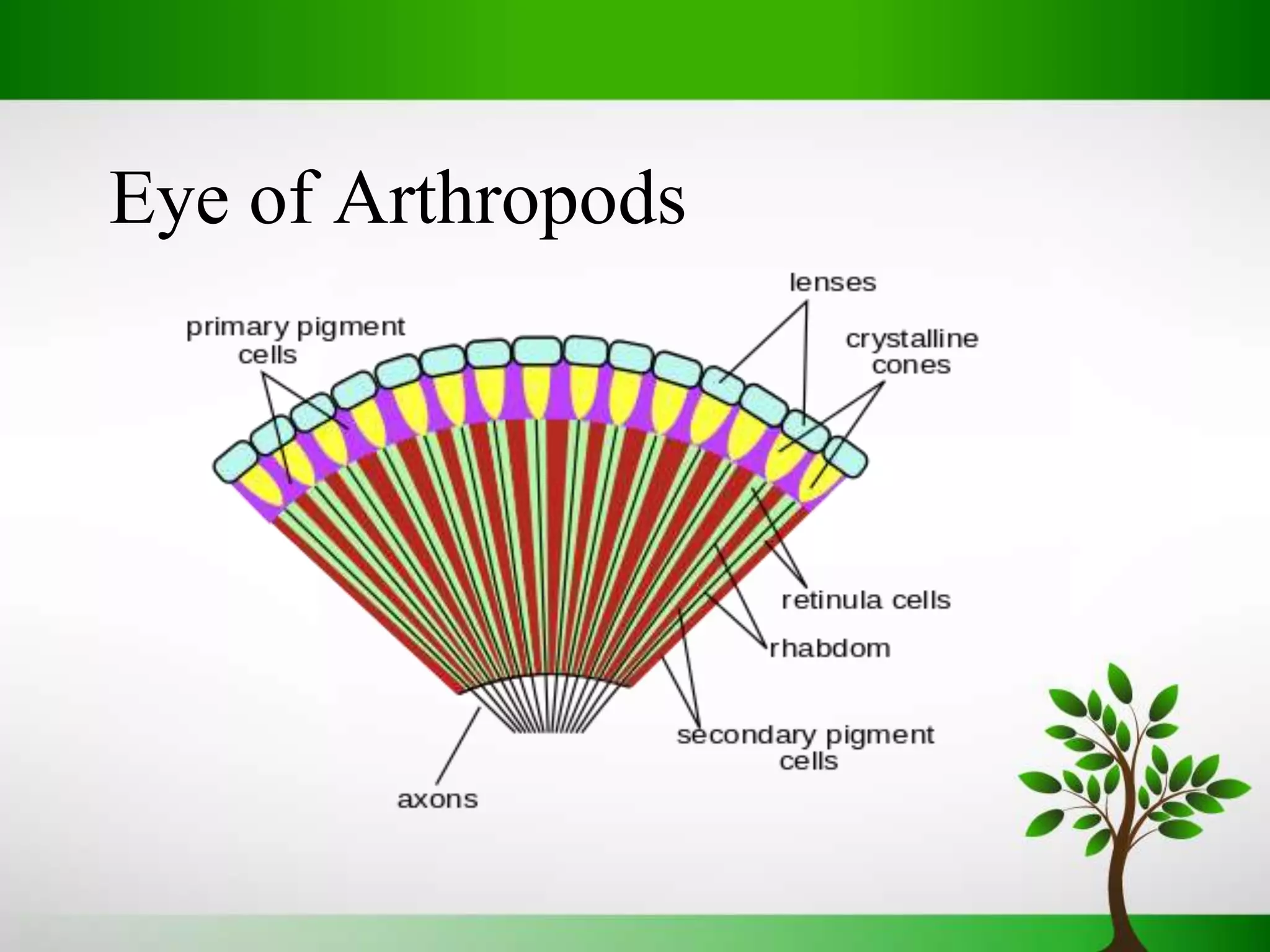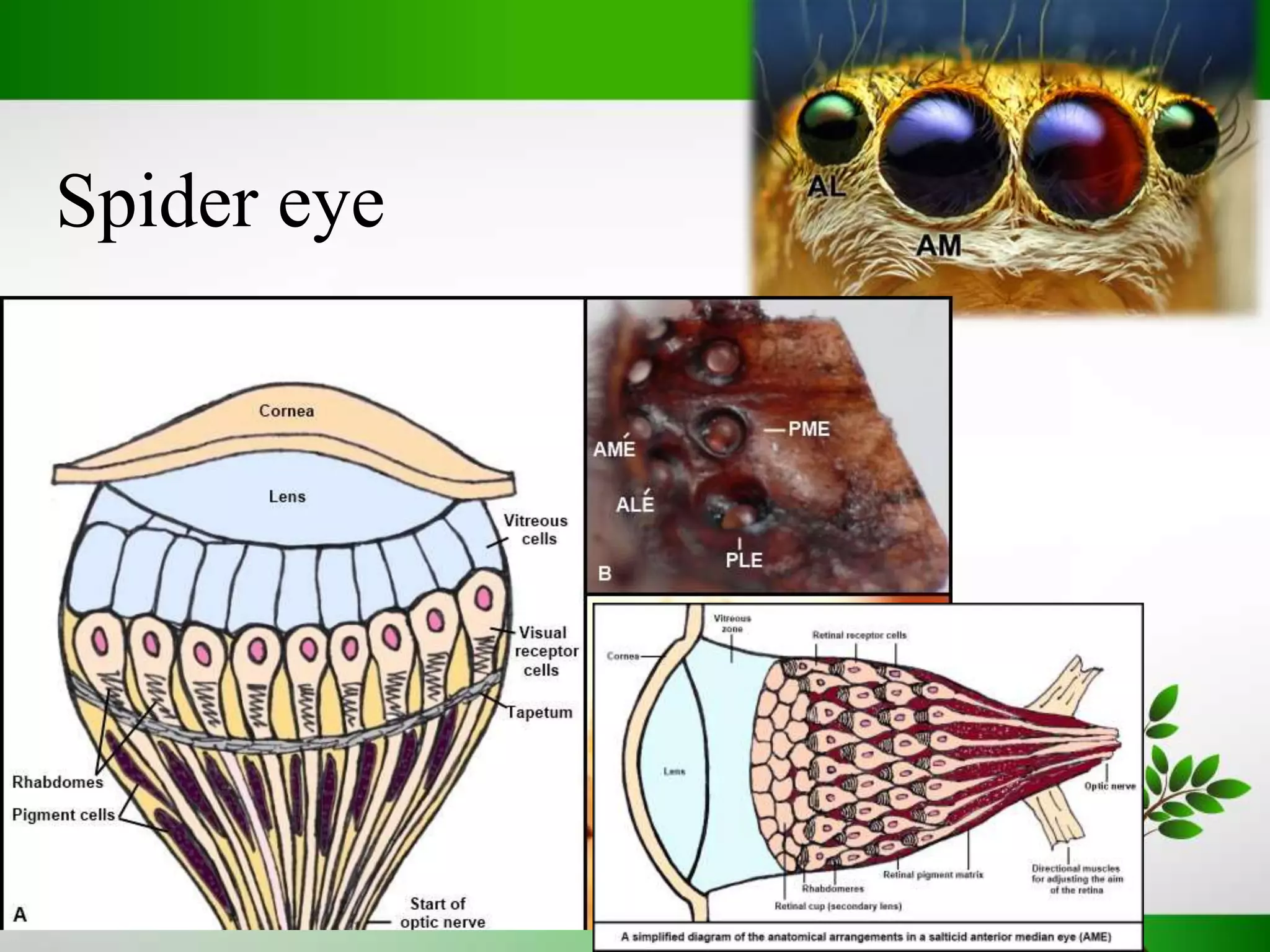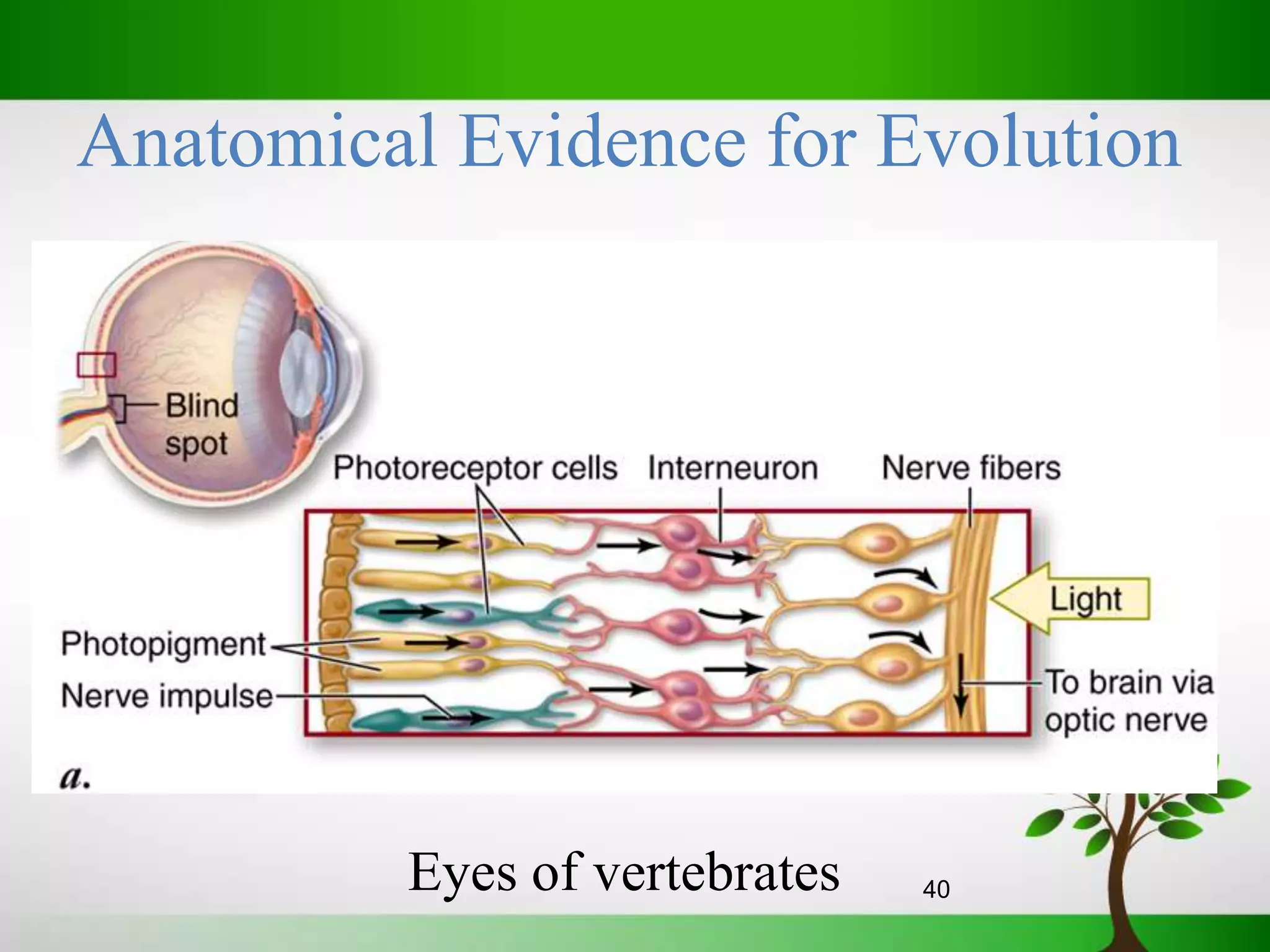The document summarizes the evolution of eyes across different organisms. It discusses how eyes evolved independently over 40-60 times from light-sensitive cells. Early eyes were simple pits that could detect light and dark, evolving into pinhole eyes and eventually camera-style eyes with lenses. Compound eyes also evolved multiple times. The molecular basis of eye evolution involves genes like Pax6 and Hox genes. Across species, eye structures adapted for different environments and lifestyles, with variations in pupil shape, color vision, and retina anatomy in fish, amphibians, reptiles, birds, and mammals.




